|
|
| (2 intermediate revisions by the same user not shown) |
| Line 259: |
Line 259: |
| | | | |
| | [[File:000Part2.png]] | | [[File:000Part2.png]] |
| − |
| |
| − |
| |
| − | [[File:000evioCount.png]]
| |
| | | | |
| | ====001==== | | ====001==== |
| Line 295: |
Line 292: |
| | [[File:000&001Part2.png]] | | [[File:000&001Part2.png]] |
| | | | |
| | + | |
| | + | ===evio Counts=== |
| | + | |
| | + | [[File:evioCountPart1.png]] |
| | + | |
| | + | [[File:evioCountPart2.png]] |
| | | | |
| | | | |
| − | FOR DC Limits | + | ==FOR DC Limits== |
| | | | |
| − | [[File:OccupancyDCLimits_Unweighted.png]] | + | [[File:dcOccupancyUnweighted.png]] |
| | | | |
| | ==Calculating== | | ==Calculating== |
Latest revision as of 02:24, 22 May 2018
[math]\underline{\textbf{Navigation}}[/math]
[math]\vartriangleleft [/math]
[math]\triangle [/math]
[math]\vartriangleright [/math]
A bash script to run the GEMC simulations is created. tcsh scripts to run root2evio on lds2 is called using sshpass. The lds2 scripts use sshfs
The main script on lds3:
BUILD_GEMC_SIMULATION.sh
The 3 scripts on lds2:
first_commands.tcsh
second_commands.tcsh
last_commands.tcsh
LUND File Output
Uniform spacing in Lab frame, not in CM frame.
0.1 degree spacing for θ in the Lab frame
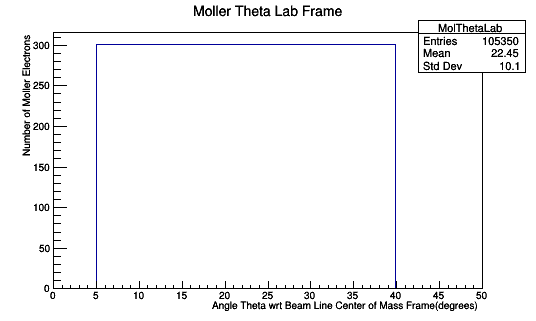
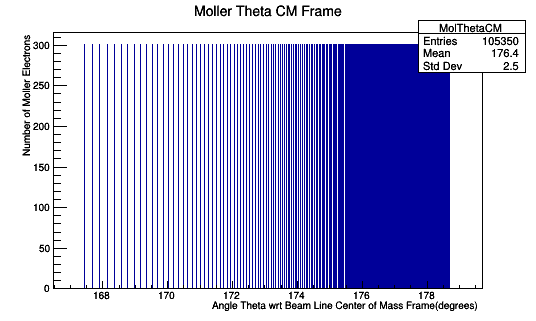
0.05 degree spacing for θ in the Lab frame
Finding the Cross Section
Total cross section over φ

Total cross section over DC limits
If we make the assumption that the beam of incoming electrons is a flux over an area for a given time,
[math]N_{incident}=\Phi\ A_{beam}\ t_{run} \rightarrow dN_{incident}=\Phi\ dA_{beam}\ t_{run}\rightarrow\ \frac{dN_{incident}}{ dA_{beam}}=\Phi\ t_{run}[/math]
Using the definition of the differential cross section:
[math]\frac{d\sigma}{d\Omega}\equiv \frac{ \Biggl(\frac{dN_{scattered}}{d\Omega} \Biggr)}{\Biggl(\frac{dN_{incident}}{dA}\Biggr)}\rightarrow \frac{d\sigma}{d\Omega}\Biggl(\frac{dN_{incident}}{dA}\Biggr)=\Biggl(\frac{dN_{scattered}}{d\Omega} \Biggr)[/math]
Substituting using the flux
[math] \frac{d\sigma}{d\Omega}\Biggl(\frac{dN_{incident}}{dA}\Biggr)=\Biggl(\frac{dN_{scattered}}{d\Omega} \Biggr)\rightarrow \frac{d\sigma}{d\Omega}\Phi\ t_{run}=\Biggl(\frac{dN_{scattered}}{d\Omega} \Biggr)[/math]
[math]\rightarrow dN_{scattered}= \frac{d\sigma}{d\Omega}\Phi d\Omega= \frac{d\sigma}{d\Omega}\Phi\ t_{run}\ \sin \theta\ d\theta\ d\phi[/math]
Since the differential cross section is known in the Center of Mass frame of reference, but measurements are taken in the Lab Frame, a transformation must occur.
[math]\rightarrow dN_{scattered}= \frac{d\sigma}{d\Omega_{Lab}}\Phi\ t\ \sin \theta_{Lab}\ d\theta_{Lab}\ d\phi_{Lab}[/math]
[math]\frac{d\sigma}{d\Omega_{Lab}}\sin \theta_{Lab}\ d\theta_{Lab}\ d\phi_{Lab}=\frac{d\sigma}{d\Omega_{CM}}\sin \theta_{CM}\ d\theta_{CM}\ d\phi_{CM}[/math]
[math]\frac{d\sigma}{d\Omega_{Lab}}=\frac{d\sigma}{d\Omega_{CM}}\frac{\sin \theta_{CM}\ d\theta_{CM}\ d\phi_{CM}}{\sin \theta_{Lab}\ d\theta_{Lab}\ d\phi_{Lab}}[/math]
[math]\rightarrow dN_{scattered}=\frac{d\sigma}{d\Omega_{CM}}\frac{\sin \theta_{CM}\ d\theta_{CM}\ d\phi_{CM}}{\sin \theta_{Lab}\ d\theta_{Lab}\ d\phi_{Lab}}\Phi\ t_{run}\ \sin \theta_{Lab}\ d\theta_{Lab}\ d\phi_{Lab}[/math]
If we divide both sides by time
[math]\rightarrow \frac{dN_{scattered}}{t_{run}}=\frac{d\sigma}{d\Omega_{CM}}\frac{\sin \theta_{CM}\ d\theta_{CM}\ d\phi_{CM}}{\sin \theta_{Lab}\ d\theta_{Lab}\ d\phi_{Lab}}\Phi \sin \theta_{Lab}\ d\theta_{Lab}\ d\phi_{Lab}[/math]
[math]\rightarrow \frac{dN_{scattered}}{t_{run}}=\frac{d\sigma}{d\Omega_{CM}}\frac{\sin \theta_{CM}\ d\theta_{CM}\ d\phi_{CM}}{\sin \theta_{Lab}\ d\theta_{Lab}\ d\phi_{Lab}}\frac{N_{incident}}{t_{run}} \sin \theta_{Lab}\ d\theta_{Lab}\ d\phi_{Lab}[/math]
[math]\rightarrow \frac{dN_{scattered}}{N_{incident}}=\frac{d\sigma}{d\Omega_{CM}}\sin \theta_{CM}\ d\theta_{CM}\ d\phi_{CM}[/math]
Performing a Riemann sum for [math]-30^{\circ} \lt \phi \lt 30^{\circ}[/math]
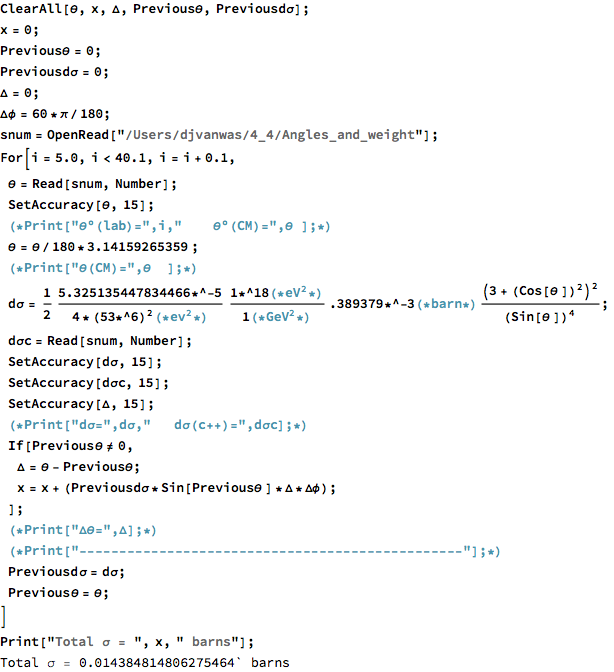
The cross section should be equal between both frames since the number of particles is an invariant. The differential cross section must differ between frames since the solid angle does vary.
[math]\sigma_{(CM)}=\sigma{(Lab)}[/math]
[math]\frac{d\sigma}{d\Omega}_{(CM)} d\Omega_{(CM)}=\frac{d\sigma}{d\Omega}_{(Lab)} d\Omega_{(Lab)}[/math]
[math]\frac{d\sigma}{d\Omega}_{(CM)} \sin \theta_{(CM)}\ d\theta_{(CM)}\ d\phi=\frac{d\sigma}{d\Omega}_{(Lab)} \sin \theta_{(Lab)}\ d\theta_{(Lab)}\ d\phi[/math]
From the expression found earlier:
[math]\rightarrow \frac{dN_{scattered}}{N_{incident}}=\frac{d\sigma}{d\Omega_{CM}}\sin \theta_{CM}\ d\theta_{CM}\ d\phi_{CM}[/math]
[math]\rightarrow \frac{d\sigma}{d\Omega}_{(Lab)}=\frac{d\sigma}{d\Omega}_{(CM)} \frac{\sin \theta_{(CM)}\ d\theta_{(CM)}\ d\phi}{ \sin \theta_{(Lab)}\ d\theta_{(Lab)}\ d\phi}[/math]
[math]\rightarrow d\sigma_{(Lab)}=\frac{d\sigma}{d\Omega}_{(CM)} \frac{\sin \theta_{(CM)}\ d\theta_{(CM)}\ d\phi}{ \sin \theta_{(Lab)}\ d\theta_{(Lab)}\ d\phi}\sin \theta_{(Lab)} d\theta_{(Lab)}\ d\phi[/math]
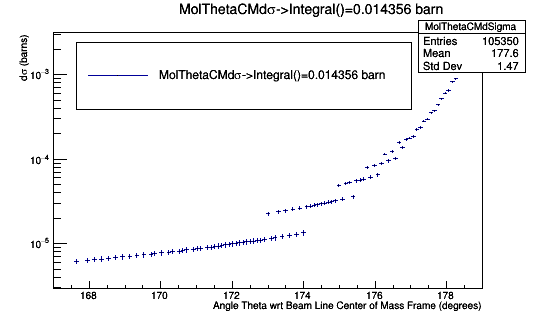
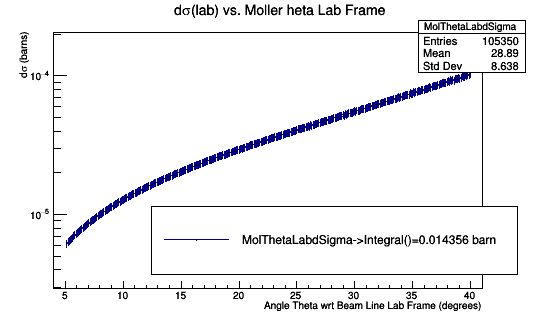
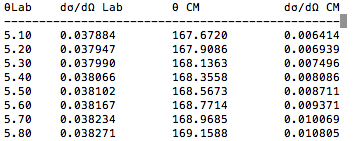

Adjust for DC Sector 1 Limits
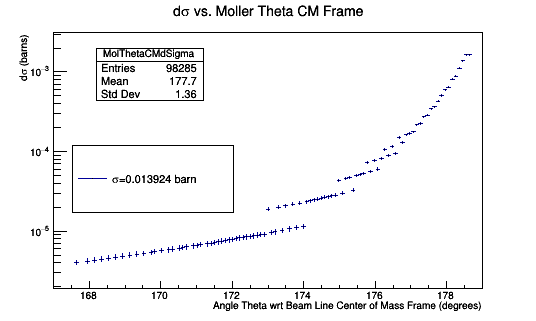
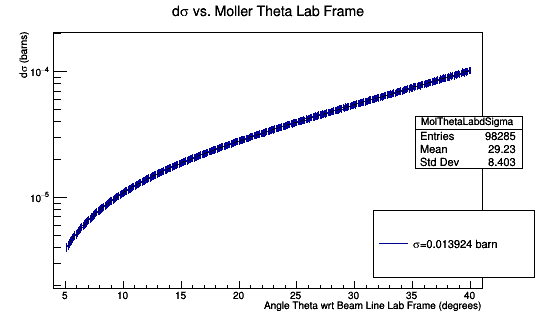
GEMC Cross Section
CORRELATED HITS
CORRELATED conditions
| GEMC conditions
|
Meaning
|
| Uses LUND θ and φ values
|
| k=0
|
1st registered hit
|
| dpid[k]=11
|
Electron
|
| tid[k]=2
|
Moller electron from LUND file
|
| mpid[k]=0
|
The mother particle implied from LUND file
|
| sector[k]=1
|
Hit is in sector 1
|
ACTUAL conditions
| GEMC conditions
|
Meaning
|
| Calculates θ and φ values from AVG positions
|
| k=0
|
1st registered hit
|
| dpid[k]=11
|
Electron
|
| tid[k]=2
|
Moller electron from LUND file
|
| mpid[k]=0
|
The mother particle implied from LUND file
|
| sector[k]=1
|
Hit is in sector 1
|
Bin Spacing of 0.05 degrees for θ in Lab Frame
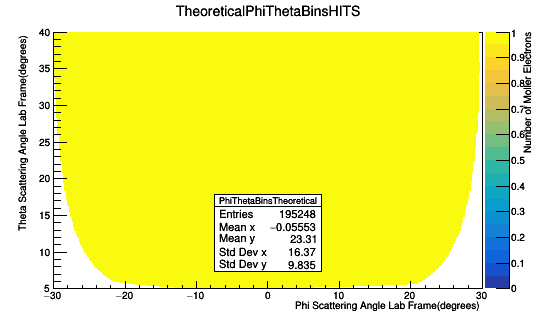
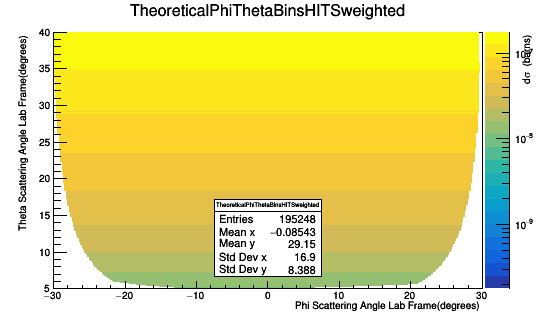
Bin Spacing of 0.1 degrees for θ in Lab Frame
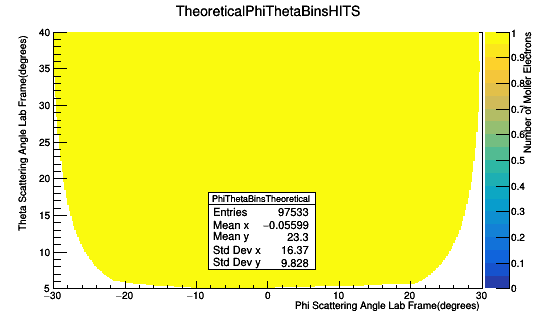
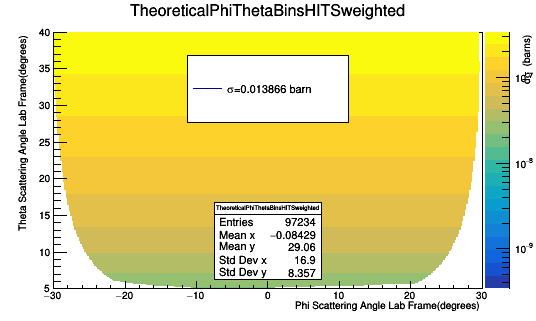
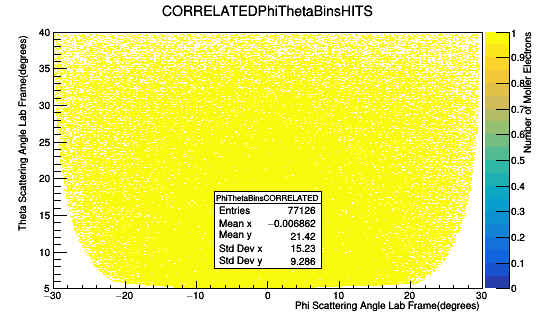
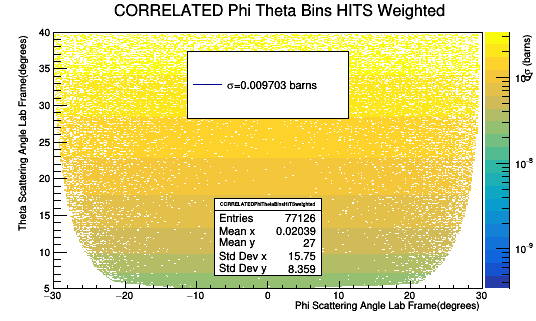
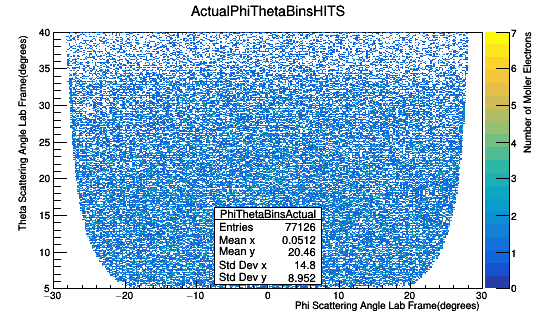
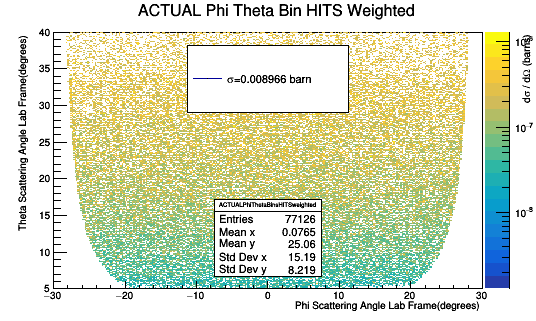
Number of Hits on Wires
Not all 1st hits are on layer 1, so we use the correlated theoretical wire number associated with the LUND Theta and Phi values. The theoretical model has events which are detected by physically impossible valued wires. If we limit the lowest wire value to 0.5 and the highest to less than 112.5
Bin Spacing of 0.05 degrees for θ in Lab Frame
Bin Spacing of 0.1 degrees for θ in Lab Frame
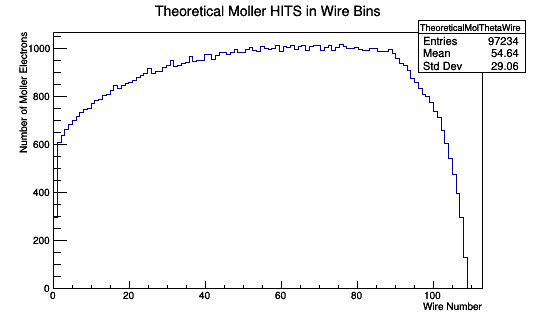
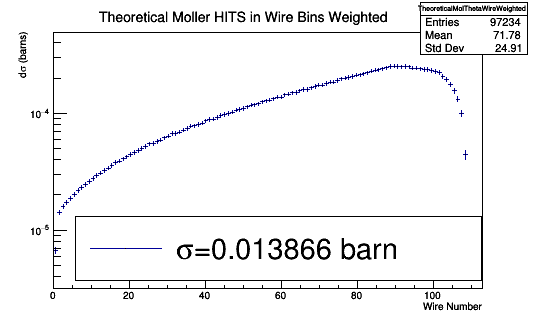
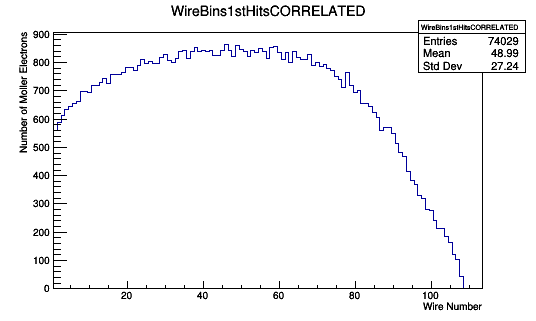
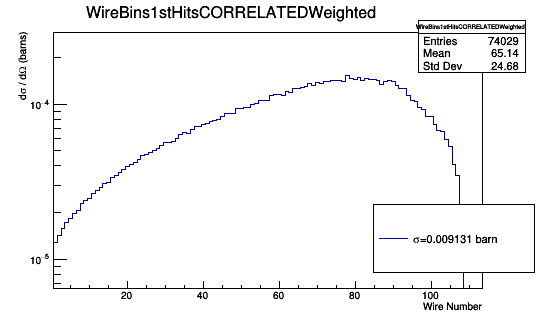
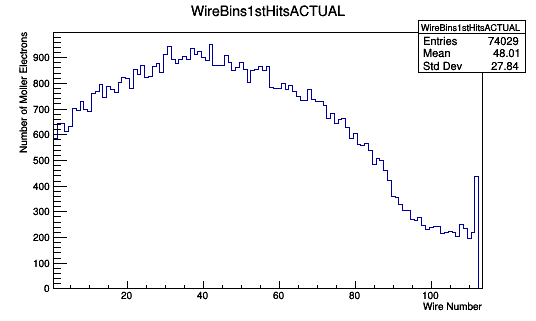
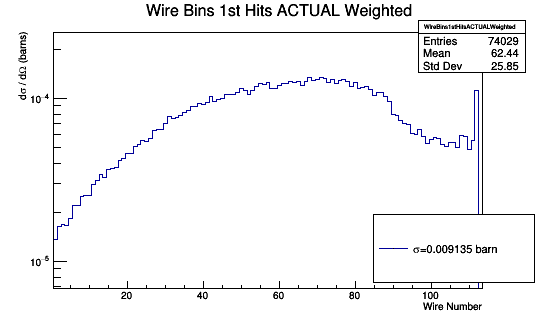
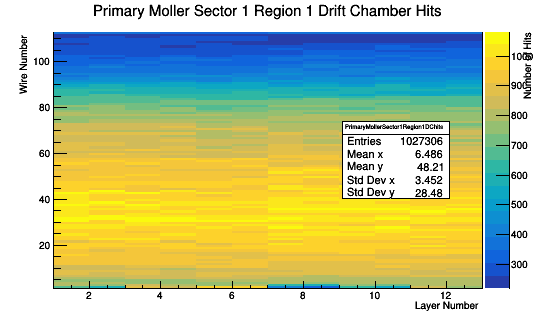
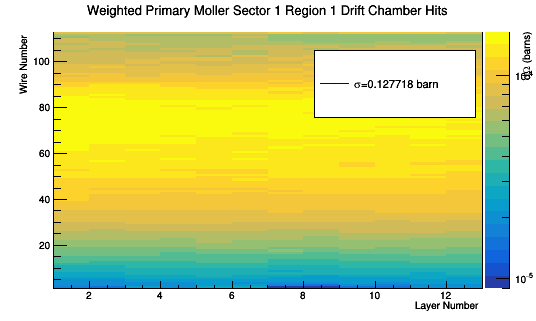
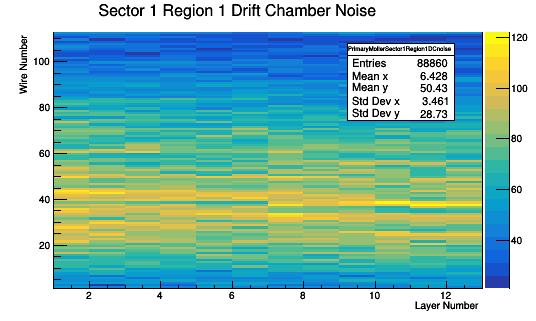
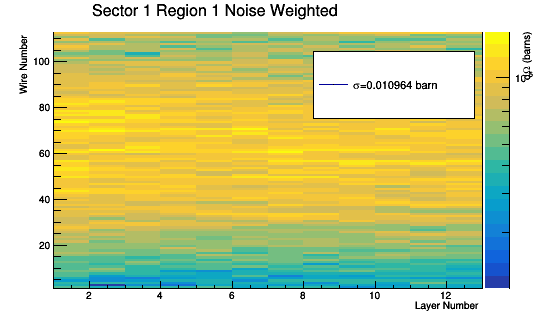
Occupancy
LH2_NOSol_0Tor_11GeV_IsotropicPhi_v2_6_ShieldOut
Run
./BUILD_GEMC_SIMULATION.sh
DVMacro
Clas12Mon
Create hipo file
Move hipo file to clas12mon folder
mv LH2_NOSol_0Tor_11GeV_IsotropicPhi_v2_6_ShieldOut.hipo ~/clas12mon
Run monitor program
./README
Load hipo file
"Press H for hipo"
"Press play"
"Switch to
Clas12mon event counting
000

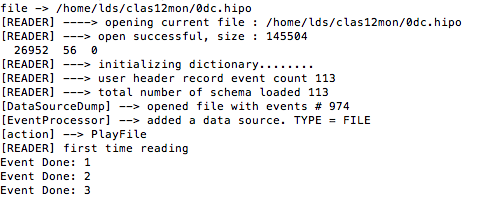
.
.
.
.

001

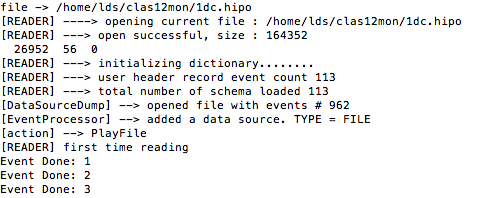
.
.
.
.

000 & 001 combined

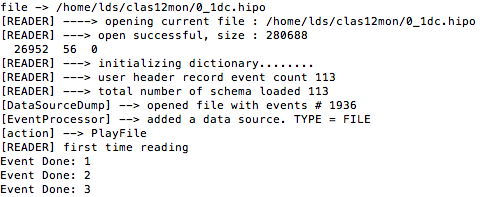
.
.
.
.

evio Counts
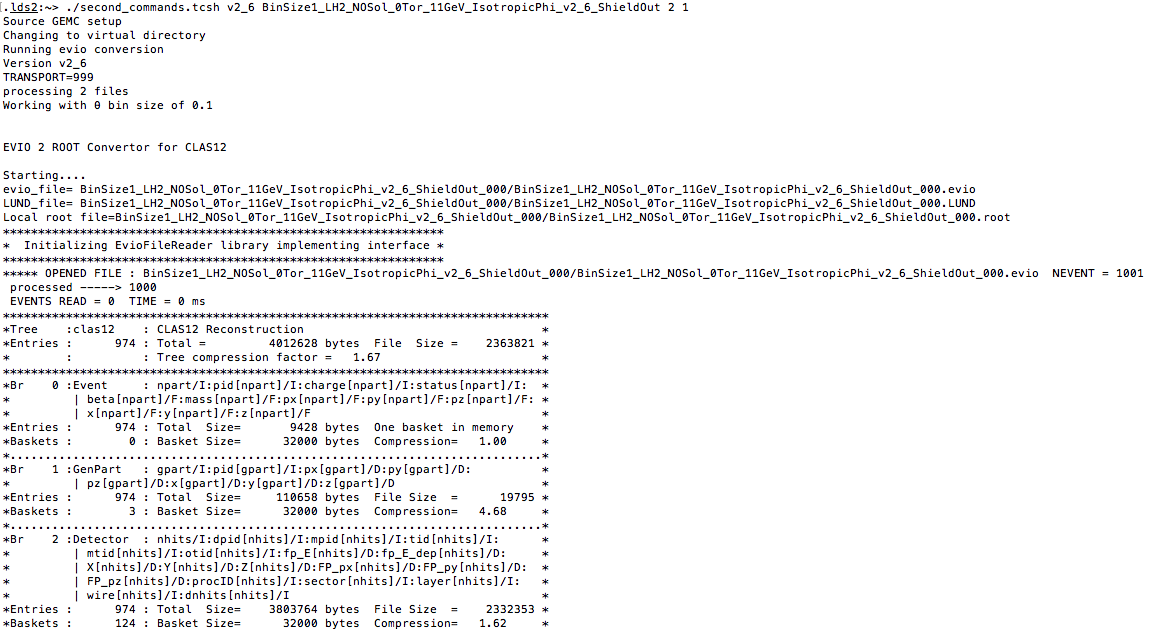
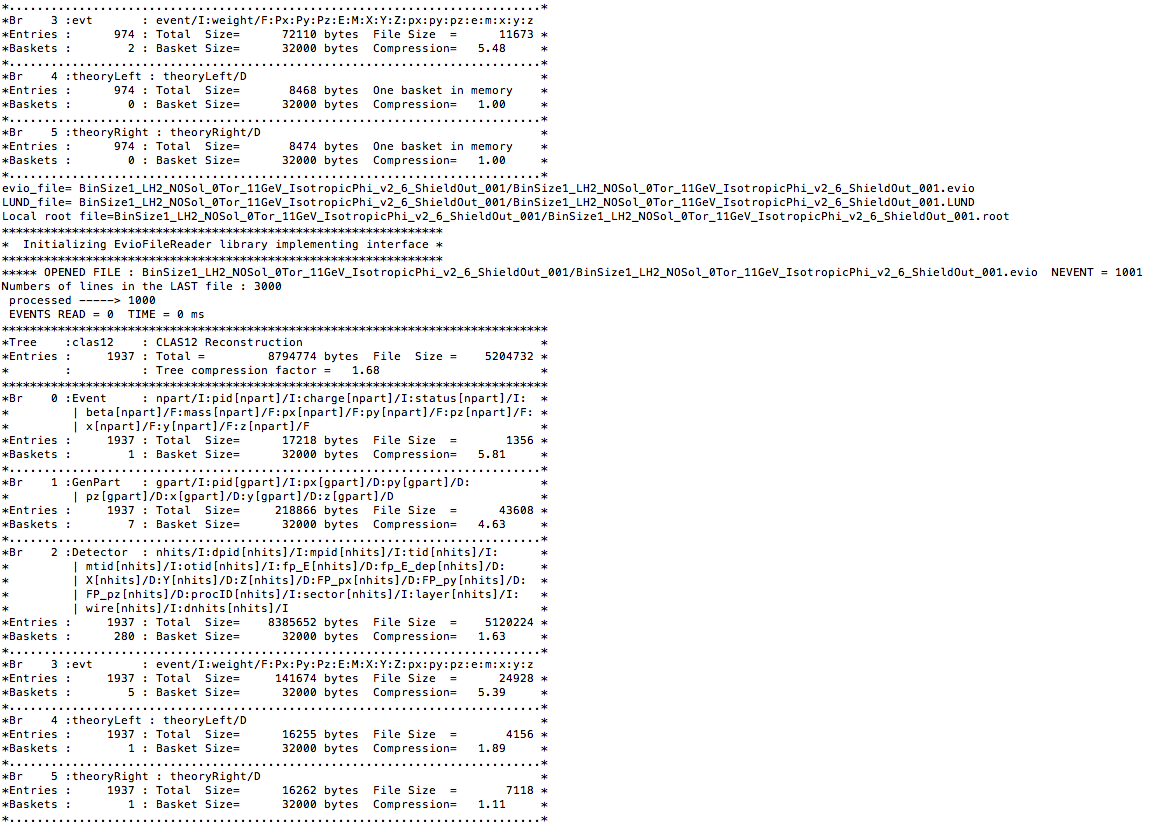
FOR DC Limits
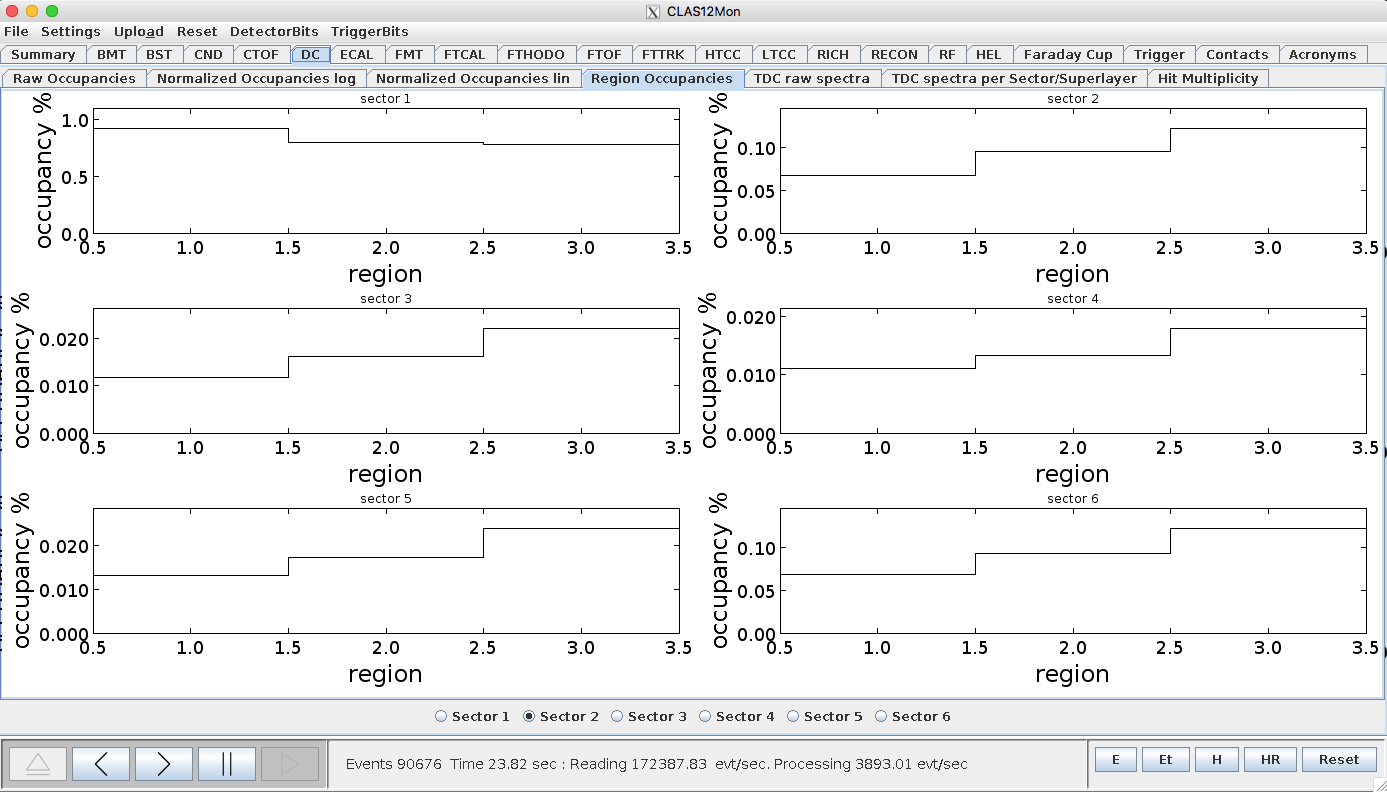
Calculating
[math]N_0=\Delta t \cdot R_{events}=\Delta t \cdot \frac{N_{events}}{t_{simulated}}=250\times 10^{-9}\ s \cdot \frac{98181}{9.3\times 10^{-6}\ s}=2639[/math]
[math]Occupancy=\frac{N_{hits}}{N_0}=\frac{N_{hits}}{\Delta t \cdot R_{events}}=\frac{t_{simulated}\cdot N_{hits}}{N_{events}\cdot \Delta t}=[/math]




































